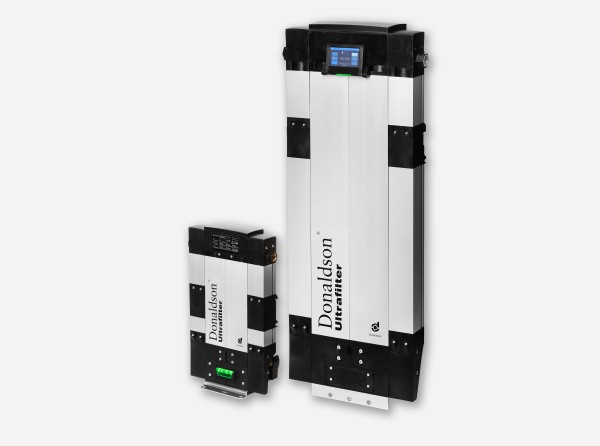Nowadays, for most industrial manufacturing processes, reliable compressed air purification with a degree of purity tailored to the application is a basic requirement. The growing demands that the manufacturing industry has to meet due to digitalization and the commitment to save energy, have led to the development of a compressed air purification system that combines all process steps - from pre-filtration to drying, to fine filtration and condensate management. In a compact stand-alone design, this system can be used as a plug and work solution.

Compressed Air Purification System:
- Dryer inlet
- Integrated UltraPleat™ prefilter
- Condensate drain
- Desiccant cartridge
- Electronic control
- UltraSilencer
- Dew point transmitter (Superplus version)
- Integrated UltraPleat™ afterfilter
- Touch display
- Dryer outlet

For the economical use as instrument air or process air, the selection of the purification components downstream of the compressor is of decisive importance. The coolers, impact and cyclone separators, coalescence filters, condensate drains, refrigeration compressed air and/or adsorption dryers and particle filters are arranged in series according to the application profile. This is standard for central purification. This does not rule out decentralized treatment at such consumers who place particularly high demands on the compressed air, because it is uneconomical for many applications to provide a high compressed air quality centrally for the entire compressed air network, especially as contamination with pollutants in the compressed air networks cannot be ruled out. Therefore, to support process and product integrity, especially in the food and beverage industry, the pharmaceutical industry and for the supply of, for example, paint shops, it is not only for economic reasons that an additional treatment stage should be used directly at the point of use.

With the Ultrapac™ Smart, a compact purification system is now available that can significantly reduce the cost of providing clean and silicone-free compressed air with low investment costs and by saving on installation and maintenance. In addition, the modular design allows a wide range of installation and mounting options in machines and systems.
Compressed Air Purification in Three Stages
- The integrated pre-filter retains solid particles and suspended matter as well as liquid aerosols (oil/water).
- The adsorption dryer adsorbs the moisture in the compressed air up to a pressure dew point of -70 °C/-94 °F, at 70 % nominal load (standard -40 °C/-40 °F).
- In the last step, remaining solid particles up to 0.01 μm are retained in the integrated after-filter.
Thanks to the three-stage treatment system, a compressed air quality according to ISO 8573-1:2010 is reliably achieved, which corresponds to quality classes 1-2:1-2 as well as 0, specified according to the application and better than class 1.
Sustainable Energy Saving and Low Noise: PDP Control and Low Differential Pressure
During the development of the system, several requirements had to be met which are essential for direct use: Controlled and consistent quality of the compressed air in accordance with the specifications for the respective application, low-noise and energy-efficient operation, simple maintenance and, finally, the possibility of integrating the control system into existing production lines. The continuous recording and control of the specified pressure dew point (PDP) is of particular importance. The PDP is set to -40 °C / -40 °F as standard. This is of particular importance as the dew point temperature changes with changing pressure. The system version with integrated dew point transmitter, which measures directly in the compressed air flow, proves to be particularly energy-saving. Switching between the two dryer cartridges - which are filled with a highly adsorptive stable desiccant - only takes place when the desiccant is absolutely saturated. This minimizes the compressed air requirement of this heatless regenerated adsorption dryer, which, in contrast to heat regenerated dryers, does not require any heating energy for the regeneration process.
The noise development during the change-over process could be reduced to the range of 60 dB(A) with a newly developed silencer. The Ultrapac™ Smart can therefore be used directly at the workplace without sound insulation or integrated into machines without increasing their noise level.
The energy-saving filters used in this system ensures optimum filtration performance at low differential pressure. When the compressed air enters the unit, the prefilter effectively separates or retains liquid and solid particles before the air flows into one of the two desiccant cartridges. The afterfilter, which removes solid particles down to 0.01 μm, is the effective safety element to ensure that the dry compressed air is available in accordance with the purity specifications.
Digitized Applications Possible
The greatest challenge in developing such a system was to make it compatible with existing plant technologies and processes for a wide range of applications while maintaining the same performance – whether as a standalone solution or a modular solution. This was achieved by the flexible design and compatible sensor and control technology. A removable display allows convenient monitoring even in tight spaces. For safe operation it is crucial that a level of digitalization is achieved with this compressed air purification system, which allows continuous monitoring of the functional processes and predictive maintenance of the easily accessible components.




